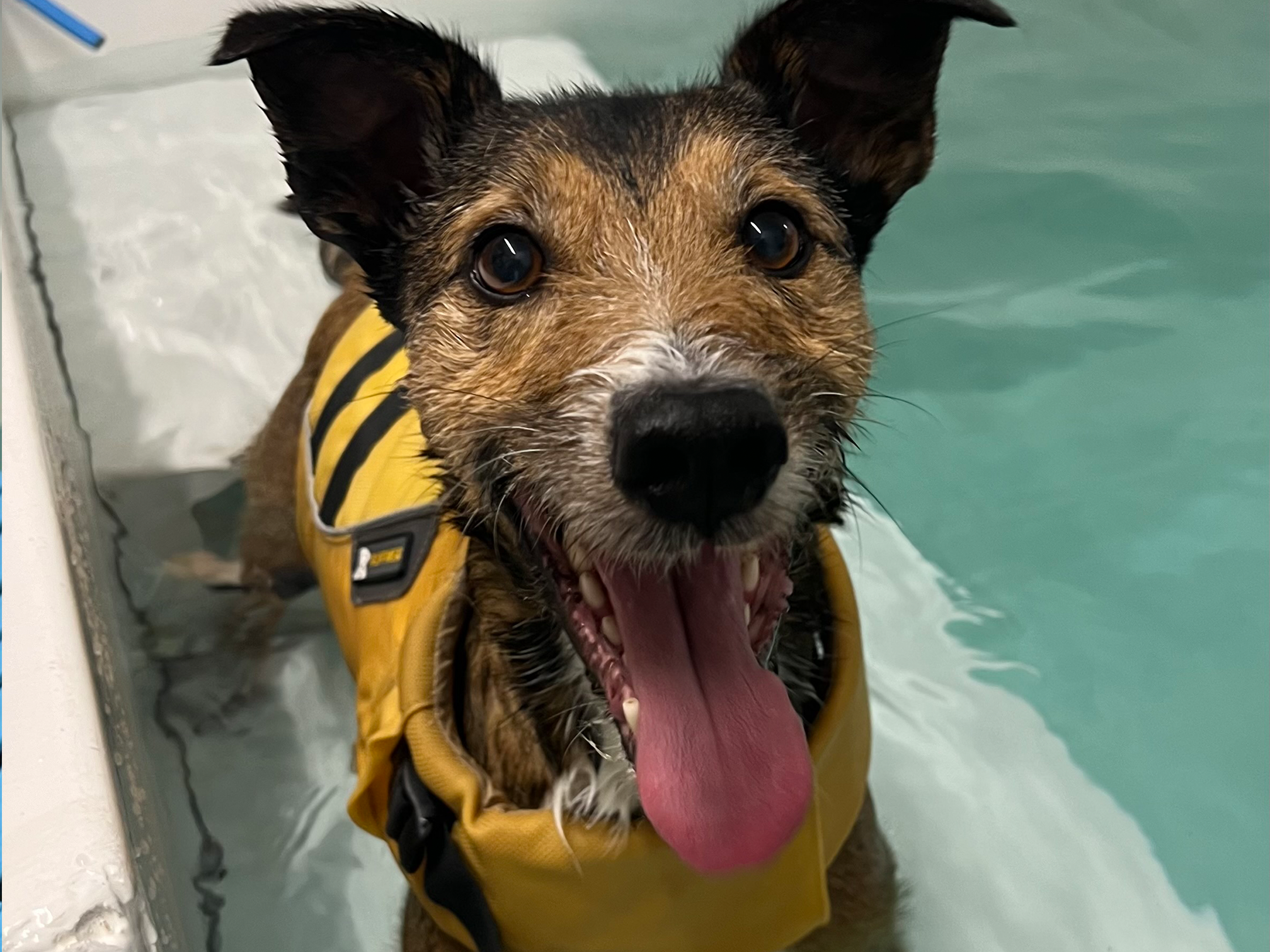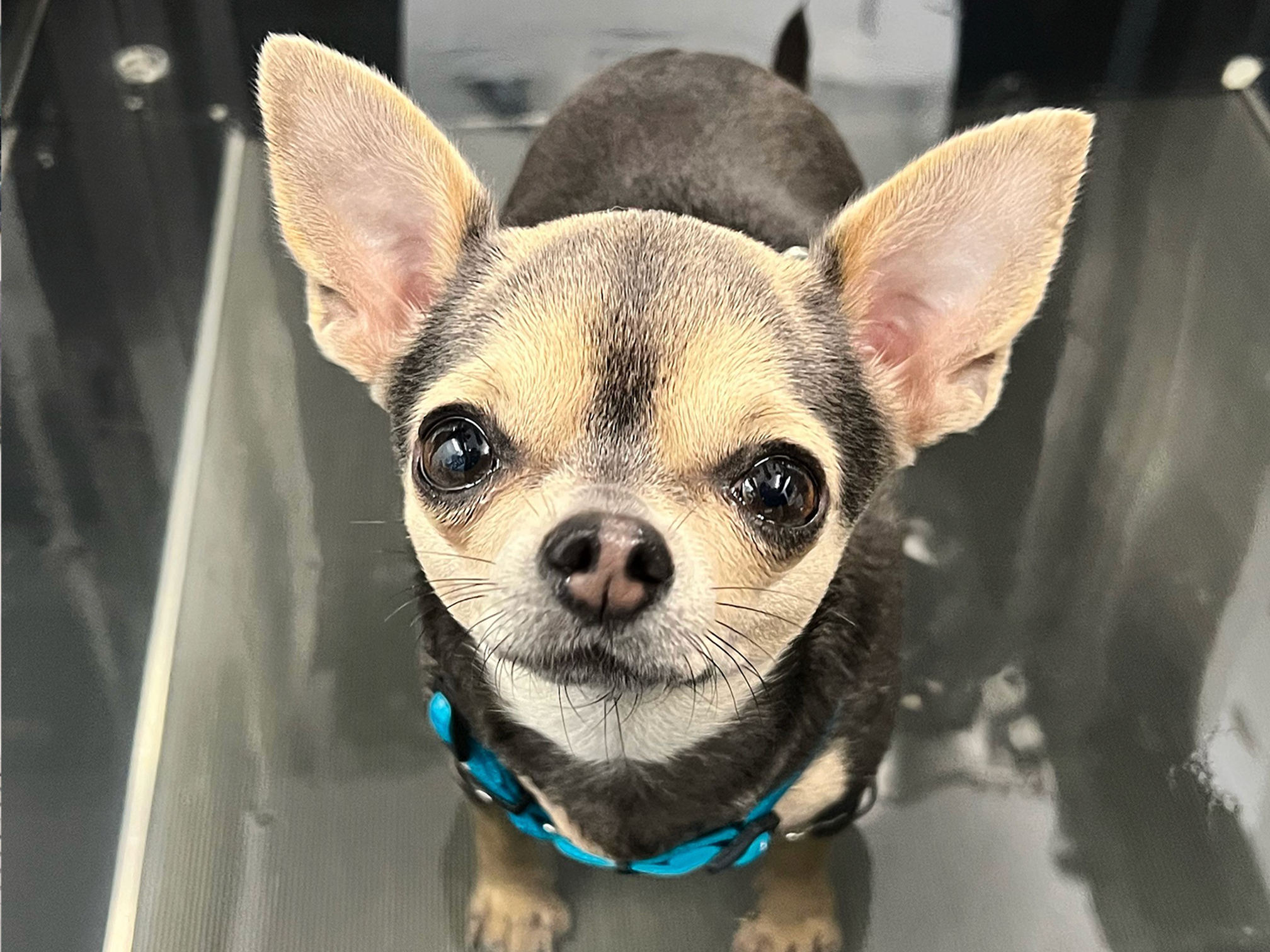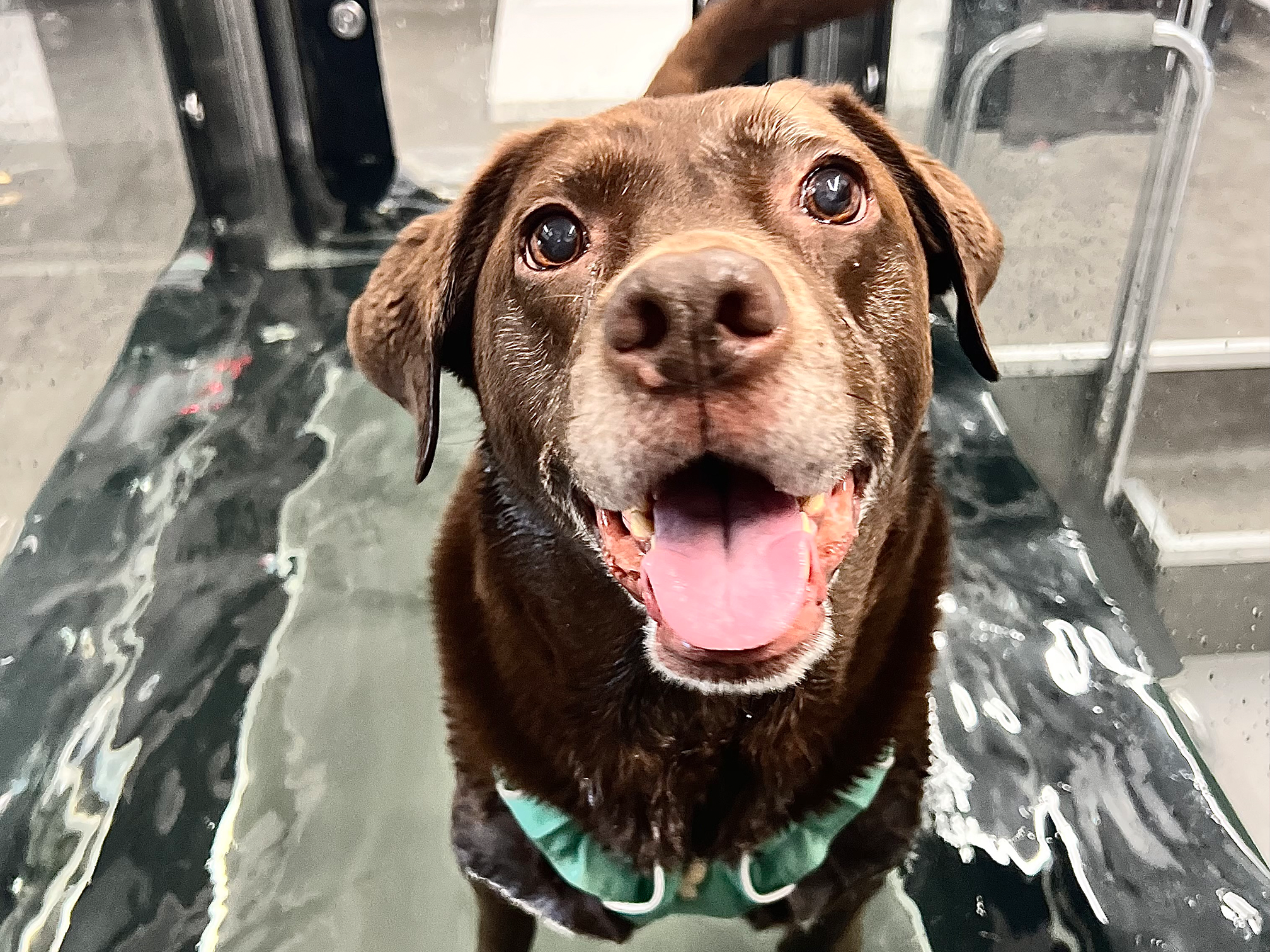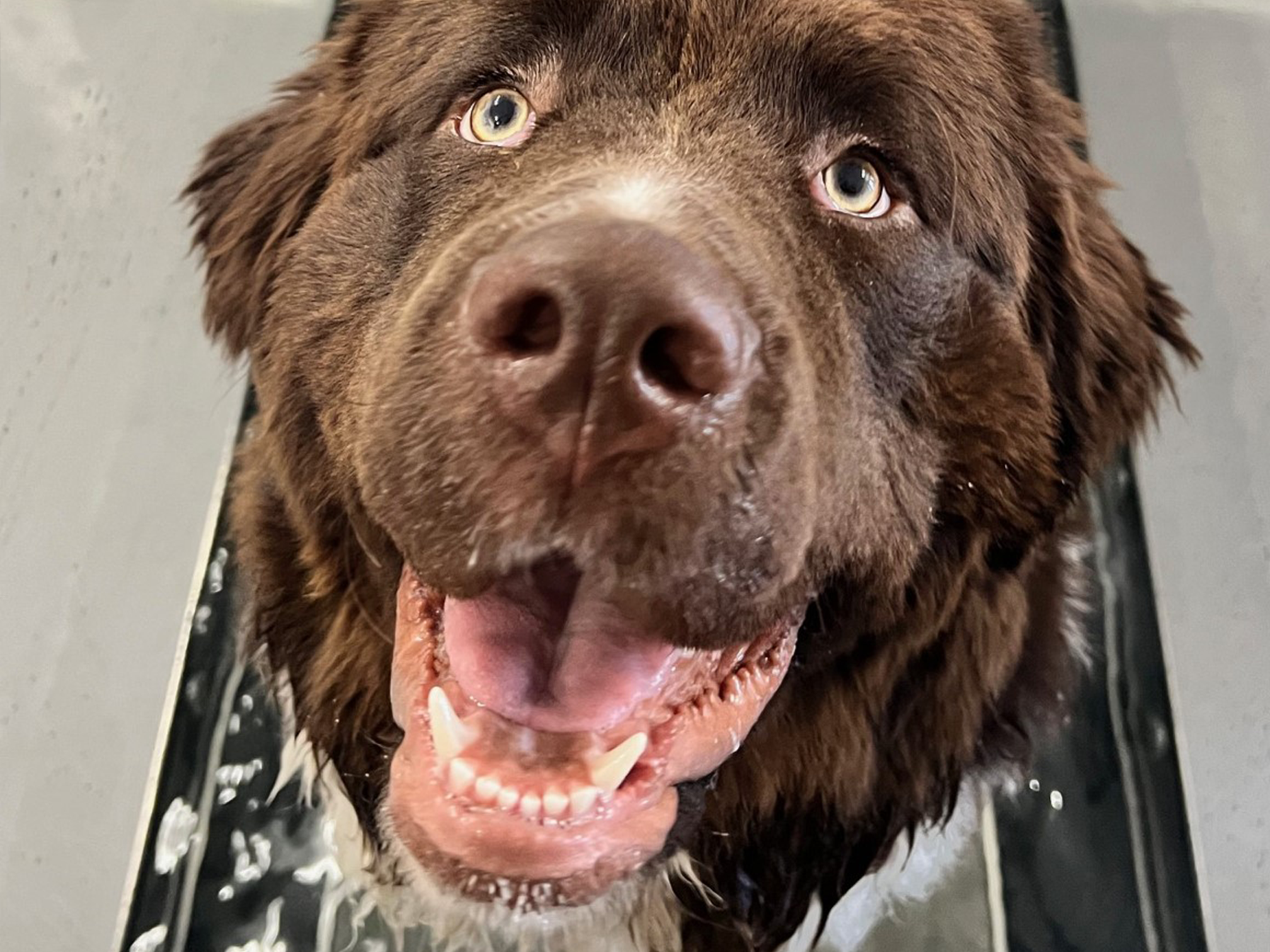Cruciate ligament injuries
The Cruciate Ligament is a major part of the Canine knee known as the Stifle. The knee joint consists of the Femur, Tibia and the Patella. The Patella is the knee cap which is in front of the Femur in the hind legs. Medial and lateral menisci cartilage fits between the Femur and the Tibia and act like shock absorbers together with an assortment of Ligaments' which link bone to bone and hence holds everything together which allows the knee to bend in the direction it should which is forward and back and not side to side and therefore acts like a hinge.
Within the knee joint there are two Cruciate ligaments which cross inside the knee joint. One Cruciate ligament is called the Cranial and the other ligament is called the Caudal. The names represent the direction the ligament moves from the lower point of contact. The Cranial ligament is there to stop the Tibia from slipping forward out from under the Femur. Likewise the Caudal ligament stops the Tibia from falling backwards out from under the Femur.
Cruciate injury is one of the most common Orthopaedic complications seen in dogs. A ruptured Cruciate is often a painful and immobilising injury see Appendix A. It is however not a serious or life threatening injury non the less it is a condition which needs to be treated for the sake of the dog as it can cause a great degree of discomfort and lameness. It is extremely likely that in a dog owner's experience of owning a dog they will experience a ruptured Cruciate.
There are several reasons why a dog can suffer a Cruciate Ligament injury. One of the reasons could be an athletic injury in a healthy dog. This could happen when landing wrong when running or jumping. Overweight dogs can also be prone to this injury due to the increased weight placed on the knee which weakens the joint. These breeds can be Labrador Retriever, Golden Retriever, Rottweiler, Mastiffs, Boxer, Newfoundland, West Highland White Terrier although this list is not exhaustive. Also some dog breeds are more prone to Cruciate Ligament injuries and can suffer a Cruciate Ligament rupture from such an early age as 1 to 3 years and often in both knees. Prevention can not always be prevented however keeping a dog at a healthy weight and ensuring regular exercise that is not too strenuous can reduce the risk.
Low grade degenerative joint disease can lead to fraying of these Ligaments, leading to them becoming weakened and dogs with poor hind limb conformation may be susceptible to disease. However, recent research indicates that even normal ligaments from dogs at risk of rupture are weaker compared to those breeds at low risk.
When the Cruciate ruptures, the injury can be partial or a complete tear. The Cranial Cruciate is the most common Cruciate to rupture although the Caudal Cruciate can tear it is less likely. When it tears the Tibia looses the control the Cruciate provides resulting in the Tibia moving freely from under the Femur which results in pain and abnormal gait. The first signs that this has occurred is usually through lameness in a rear leg. If the condition remains untreated, arthritic changes can begin quite quickly, causing long term lameness and discomfort.
We would use the treadmill to treat spinal conditions because:
- The buoyancy of the water supports the spine
- We can get into the treadmill to replicate the movement of the limbs to re-educate the brain
- We can isolate limb movement to concentrate on affected limbs
- It provides maximum flexion and extension of the limbs
- Quickly increases muscle mass
- Helps to strengthen core muscles and therefore can reduce incontinence
- Re educates the gait pattern following the muscle atrophy in the fore or hind limbs
- Provides an earlier return to activity
- Very easy to observe the range of movement (ROM) through the glass sides
- The dog is unable to cheat unlike in the pool where they have a tendency to tuck their hind legs up making it difficult to get a good rom.
If you believe your dog is in need of Hydrotherapy, or your Vet has recommended treatment, first thing you need to do is call us on 01635 521915 or send us an email at info@ActNow-Newbury.co.uk
Contact Us
Call: 01635 521915
Email us







